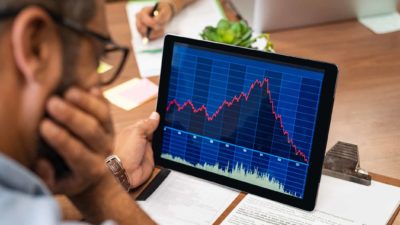The market volatility caused by coronavirus could produce some of the best buying opportunities in many years for long-term investors in shares.
Certainly, there are potential risks ahead. The world economy faces one of its biggest-ever challenges, and may experience a prolonged period of disappointing growth.
However, many high-quality businesses are likely to survive such a period. Buying them now while they offer wide margins of safety and holding them for the long run could yield high returns.
Market volatility
The past performance of the stock market suggests that the best buying opportunities occur when market volatility is at its highest. During such periods, many investors become increasingly fearful about the prospects for their portfolios. This can mean that demand across the investment community for equities declines, thereby causing stock prices to fall.
Although in some cases investor caution towards the stock market is warranted, since some stocks may not survive an economic shock, the wider market has a strong track record of recovering from its downturns. Therefore, investors who can live with the potential for disappointing performance from their portfolios in the short run, while sentiment among their peers is weak, could benefit from long-term recoveries that boosts the performance of their portfolios.
High-quality stocks
As mentioned, not all companies survive recessions. Therefore, it is imperative that investors focus their capital on those businesses that have a high chance of survival. They are likely to include established businesses with long track records of delivering improving profitability in a wide range of operating conditions. They may also include companies with low debt levels, strong cash flow and wide economic moats that protect them from the potential for lower sales and profitability in the coming months.
Although such companies may trade at higher prices than their weaker peers, paying a premium for a high-quality stock could be a prudent move. It may substantially lower your overall risks, and still leave a large amount of capital growth potential over the long run.
Buy-and-hold
Buying ASX shares during the current period of high market volatility is just one part of successfully capitalising on lower valuations. To maximise your returns, holding stocks for a long time period may be necessary. It could take many years for the world economy to overcome its current challenges, and for the strongest businesses within a specific industry to extend their dominance over weaker peers.
Therefore, a buy-and-hold strategy could be a sound means of capitalising on current market volatility and the likely recovery potential of the stock market. It has historically been a successful strategy that has helped many investors to take advantage of uncertain market conditions. Although the world economy may be facing an unprecedented crisis, it could do likewise over the coming years and may lead to a significant improvement in your financial situation.









